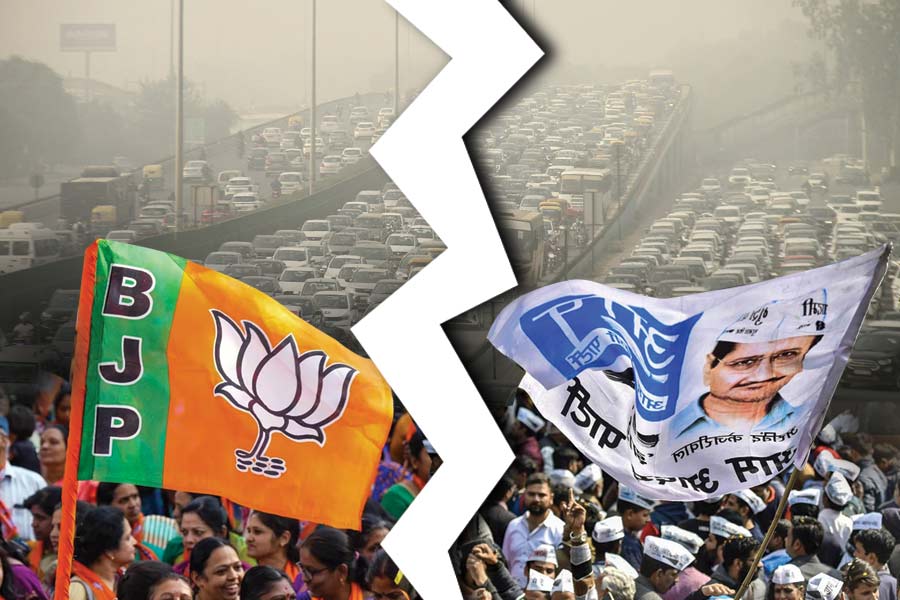Chief economic adviser Krishnamurthy Subramanian slammed industry for seeking tax reliefs from the government to tide itself over the current economic slowdown and claimed the Indian economy was holding firm, with some segments doing well and others languishing, though he fought shy of mentioning specific industries.
“The possibility of a situation where profits are private and losses are socialised is an anathema to the way a market economy functions. When companies churn out more profits, they do not pay additional taxes. So it is unfair to expect the government to extend support to them when they are struggling,” he said at the 13th Hero Mindmine Summit here.
The CEA’s stand against stimulus dashed industry hopes of government support, leading to a massive sell-off in stocks and rupee tumbling to an eight-month low.
“The government cannot be expected to intervene every time some sectors go through a bad phase. We have to be careful to not be swayed by anecdotes,” he said, referring to the widespread concerns of an economic slowdown.
Subramanian said sectors go through sunrise and sunset phases and expecting the government to support them during the dull phase can be morally hazardous.
“We expect the government to use taxpayers’ money to intervene every time there is a sunset phase... I think you introduce a possible moral hazard by doing so,” he said.
Steady growth
India is still a bright spot in a world that is growing at mere 2-2.5 per cent, Subramanian said. India needs to focus on investment, while reforms should be focused on encouraging investments by private players, he said.
Countries growing at 5 per cent for 10 years had higher investments, he said.
On the challenges the automobile sector is facing, the CEA said: “To say that auto sector slowdown is symptomatic of economic slowdown is not precise. Some sectors are doing well while some others are facing slowdown.”
Speaking at the same event, power minister Subhash Chandra Garg re-affirmed Subramanian’s views.
Garg warned any stimulus could lead to additional government borrowing, which would stall the transmission of RBI rate cuts by banks.
Garg said gross domestic product growth in April-June was likely be around 5.5-5.6 per cent. He said there is no global recession at present. “This year’s global growth will actually be higher than the average of the past 3-4 years. We might be overblowing the slowdown,” he said.
Meanwhile, government think-tank Niti Aayog on Thursday made a case for extraordinary steps to deal with the stress in the financial sector. “The government needs to encourage private sector players to step up investments,” Niti Aayog vice-chairman Rajiv Kumar said.
He said private investments would drive India out of the middle income trap.
“The July-September period is usually the quarter when the talk of slowdown is the most pronounced, and we are seeing the same thing this year too,” Garg said.
Steady Growth
Despite some slowdown, India is still a bright spot in a world that is growing at mere 2-2.5 per cent, Subramanian said. He said India needs to focus on investment, while reforms should be focused on encouraging investments by private players. He said countries growing at 5 per cent for 10 years had higher investments and there is a need for reforms in investment, divestment as well as in labour laws.
On the challenges being faced by the automobile sector, the CEA said “to say that auto sector slowdown is symptomatic of economic slowdown is not precise. Some sectors are doing well while some others are facing slowdown.”
The auto sector is facing its worst crisis in two decades and reports suggest thousands of job losses in the automobile and ancillary industry. Nearly two decade low passenger vehicle sales in July, a fall for the ninth straight month, has triggered massive job loss of over 3.45 lakh workers and the industry is looking forward to stimulus package from the Modi government to revive demand ahead of the festival season.
Passenger car sales in July were also worst since December 2000 when the segment had declined by 39.86 per cent. Last month, domestic car sales were down 35.95 per cent at 1,22,956 units as against 1,91,979 units in July 2018.
Finance Ministry officials said the government is considering measure which would provide relief to different sectors and boost growth. But, they indicated that there would not be a large scale fiscal stimulus measure as the Centre is working within 'limited resources'.
Fiscal deficit for the first three months of the current financial year has reached more than 61 per cent of the Budget Estimate, according to government data. Fiscal deficit is the difference between government’s earning and expenditure. At 3.3 per cent of GDP, the government has budgeted over Rs 7-lakh crore as fiscal deficit for the current fiscal.
Prime Minister Narendra Modi has reviewed the state of the economy with Finance Minister Nirmala Sitharaman and other officials and discussed steps to prop up the economy.
Officials said the “PM was worried about job cuts and the issue of credit availability for the micro small and medium enterprises (MSME). The PM has asked the finance minister to streamline ideas to spur jobs and business sentiment.”
The ministry has been meeting different industry and sectoral representative to understand the issues and possible solution to address them. The review meeting, the officials said, was to assess the nature of the slowdown and its long-term impact. There are expectations that the government would come out with sector-specific stimulus.
India’s economic growth has slowed to 6.8 per cent in 2018-19 - the slowest pace since 2014-15. The GDP growth in the fourth quarter of the last fiscal came in at 5.8 per cent caused by slowdown in key sectors like agriculture, manufacturing and industry.











